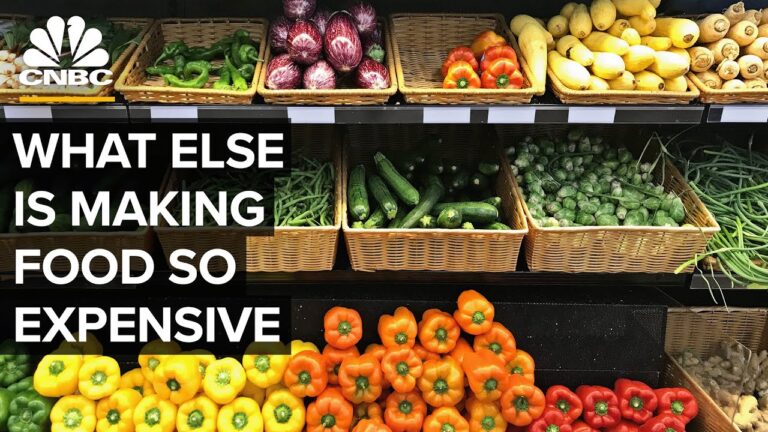Learn What Else is Making Food So Expensive
The United Nations’ worst-case scenario calculation is that food prices will rise by an additional 8.5% by 2027. Part of those higher costs is due to more expensive fertilisers as some have seen 300% price spikes over the past year, according to the American Farm Bureau.
Farmers may be forced to pass those costs along to customers, resulting in higher grocery prices. Fertiliser is essential for crops. Without fertiliser, plants may not get the nourishment they need to result in the yields necessary to feed the global population.
According to the International Fertiliser Association, we would only be able to feed about half of the global population without fertiliser. Watch the video above to learn more about why the world is faced with a fertiliser crisis, supply chain woes, climate change impact and potential solutions on the horizon.
“Last year [fertiliser] was around $270 per ton and now it’s over $1,400 per ton,” Meagan Kaiser, of Kaiser Family Farms and farmer-director of the United Soybean Board, told NBC’s “Nightly News with Lester Holt.” “It’s scary. It turns my stomach a little bit to think about the amount of risk that our family farm is taking right now.” Farmers are trying to adjust to this new normal.
When surveyed in spring 2022 about what they intended to plant, farmers said they were turning to more soybean, according to U.S. Department of Agriculture data, or a record 91 million acres of the legume. That may be because legumes don’t require as much fertiliser as corn to grow.
Spikes in fertiliser prices started when Russia invaded Ukraine in 2022. “It’s amazing how dependent the world is on fertilisers from the region that we’re talking about Russia and Ukraine,” Johanna Mendelson Forman, adjunct professor at American University’s School of International Service, told CNBC.
The region is responsible for at least 28% of the world’s fertiliser exports, including nitrogen-, potassium- and phosphorus-based fertilisers, according to Morgan Stanley. Also factoring into price spikes are rising natural gas costs. “There’s a direct relationship with what we’re seeing in fuel prices and fertiliser prices,” Jo Handelsman, director of the Wisconsin Institute for Discovery at the University of Wisconsin-Madison, told CNBC. That’s because fossil fuels are used in the manufacturing process of fertilisers — and is one of the reasons that they can contribute to climate change.
Plus, if farmers overuse fertilisers, the chemicals can run off into waterways, causing environmental damage, pollution and illnesses. “I’m not saying that the fertiliser is bad … our soil naturally has nutrients,” Ronald Vargas, secretary of the Global Soil Partnership for the United Nations. “If [soil] is naturally depleted, then you need to find a way to make those nutrients available.”
CNBC


